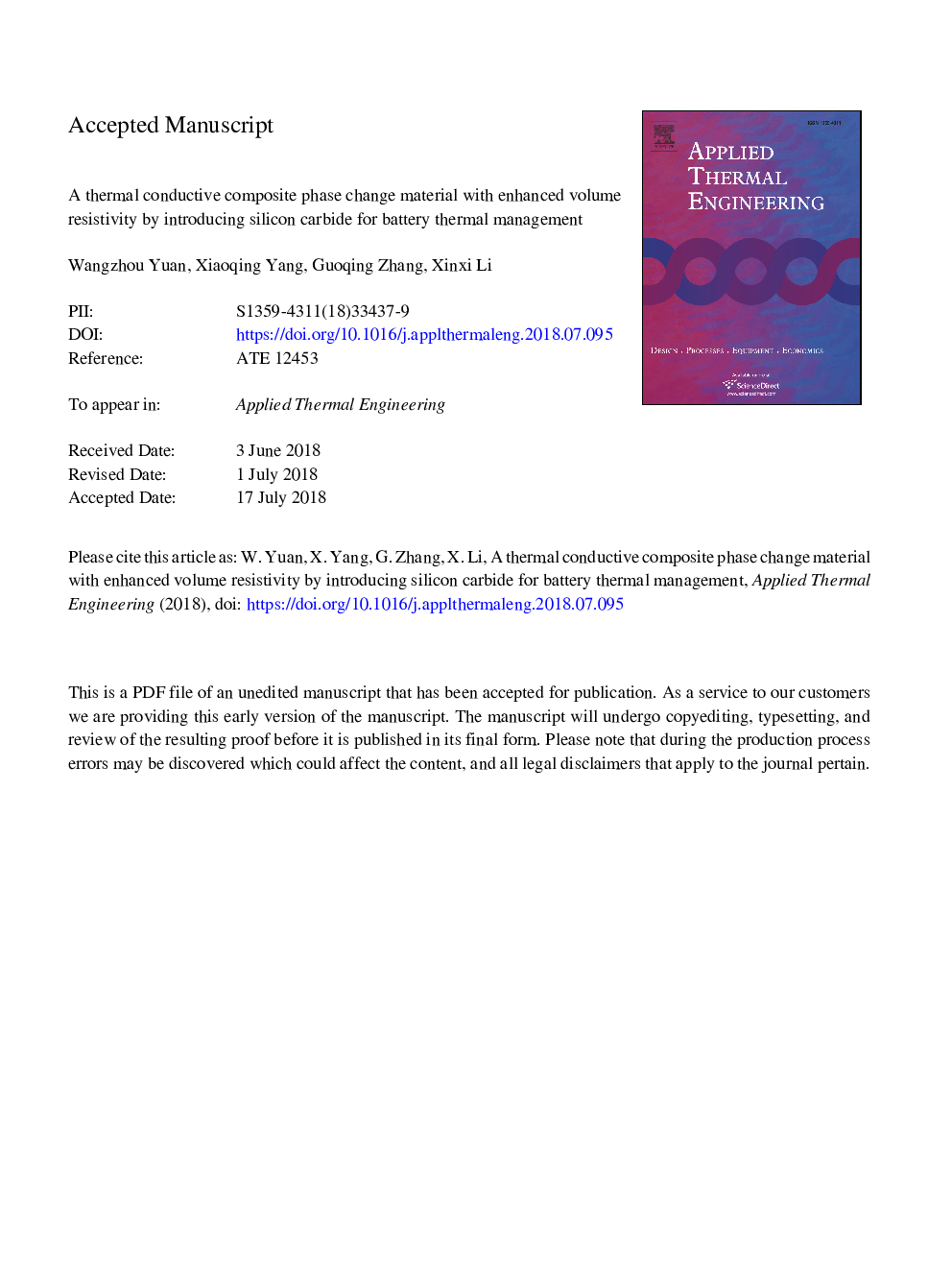| Article ID | Journal | Published Year | Pages | File Type |
|---|---|---|---|---|
| 10127287 | Applied Thermal Engineering | 2018 | 23 Pages |
Abstract
Conventional strategy to enhance the thermal conductivity of the composite phase change material (CPCM) may raise another neglected safety issue in practical applications of battery thermal management (BTM): the electrical conductivity of the CPCM module is significantly increased due to the addition of the conductive carbonaceous or metallic component. To address this issue, we develop a new kind of CPCM herein by introducing a silicon carbide (SiC)/expanded graphite thermal conductive skeleton. The high thermal conductivity and electrical resistivity of the SiC endow the obtained CPCM with a high thermal conductivity but low electrical conductivity. For example, after adding 15â¯wt% of SiC, the volume resistivity of the CPCM is increased from 4.9 to 12.5 à 1011 Ω cm, whereas the corresponding thermal conductivity is increased from 1.1 to 2.0â¯Wâ¯mâ1 Kâ1, thus giving rise to a much better cooling performance for BTM, especially under high discharge rate. Furthermore, adding a suitable amount of the SiC will also enhance the mechanical strength, which is beneficial to the practical application.
Keywords
Related Topics
Physical Sciences and Engineering
Chemical Engineering
Fluid Flow and Transfer Processes
Authors
Wangzhou Yuan, Xiaoqing Yang, Guoqing Zhang, Xinxi Li,
